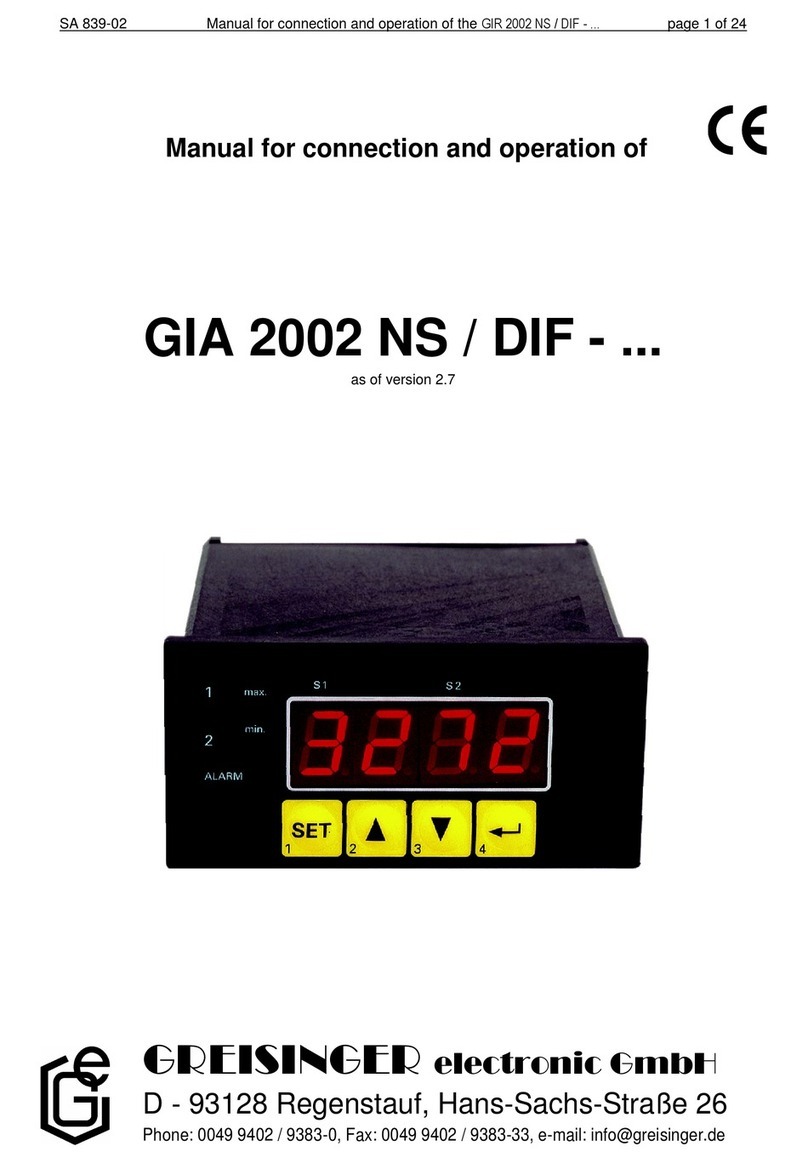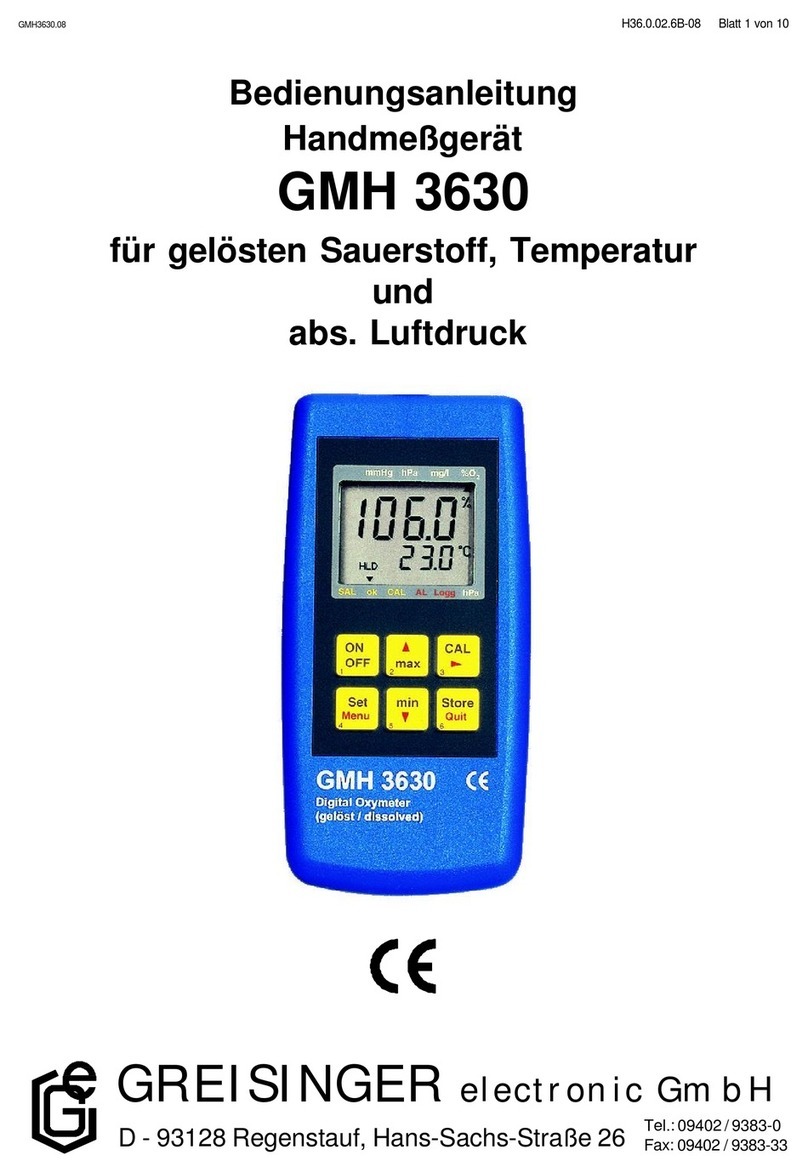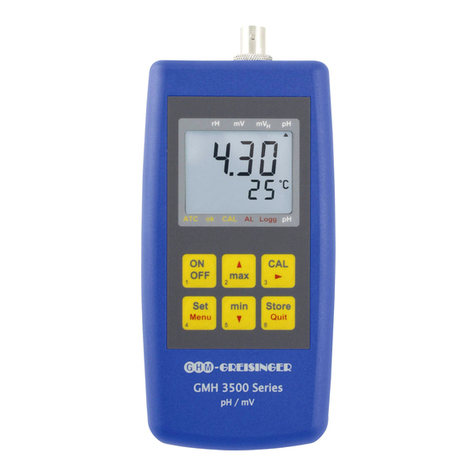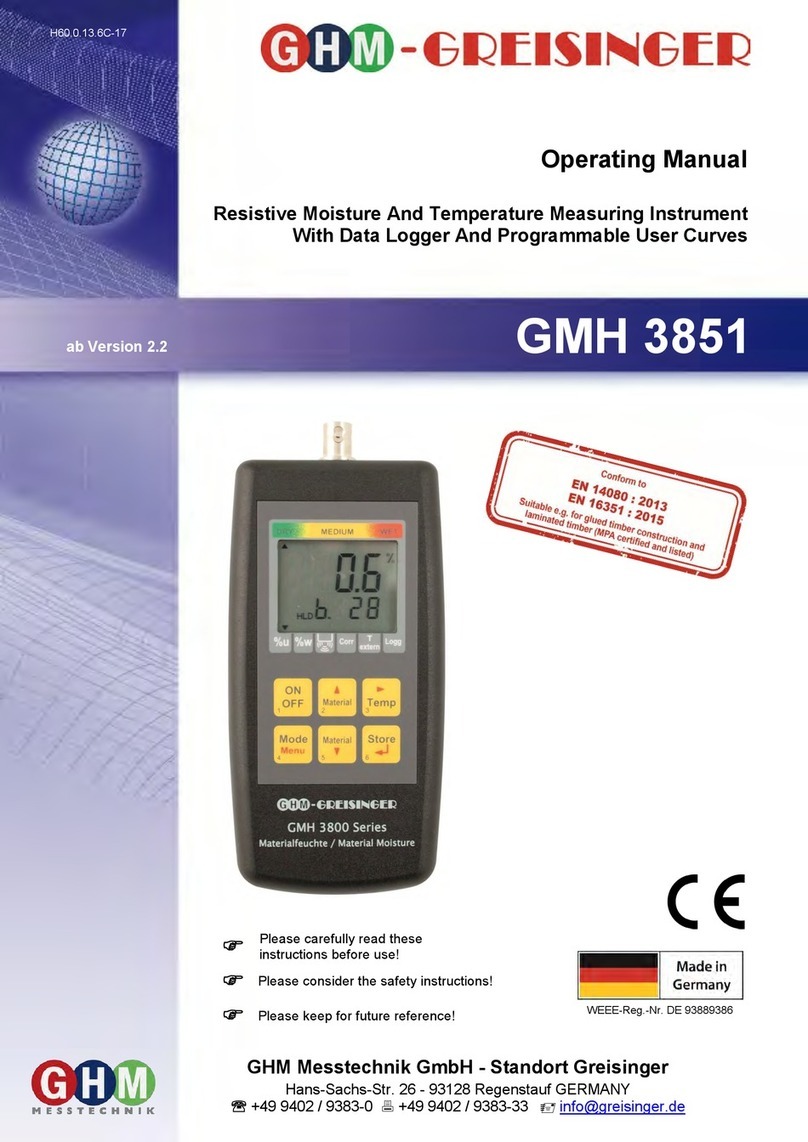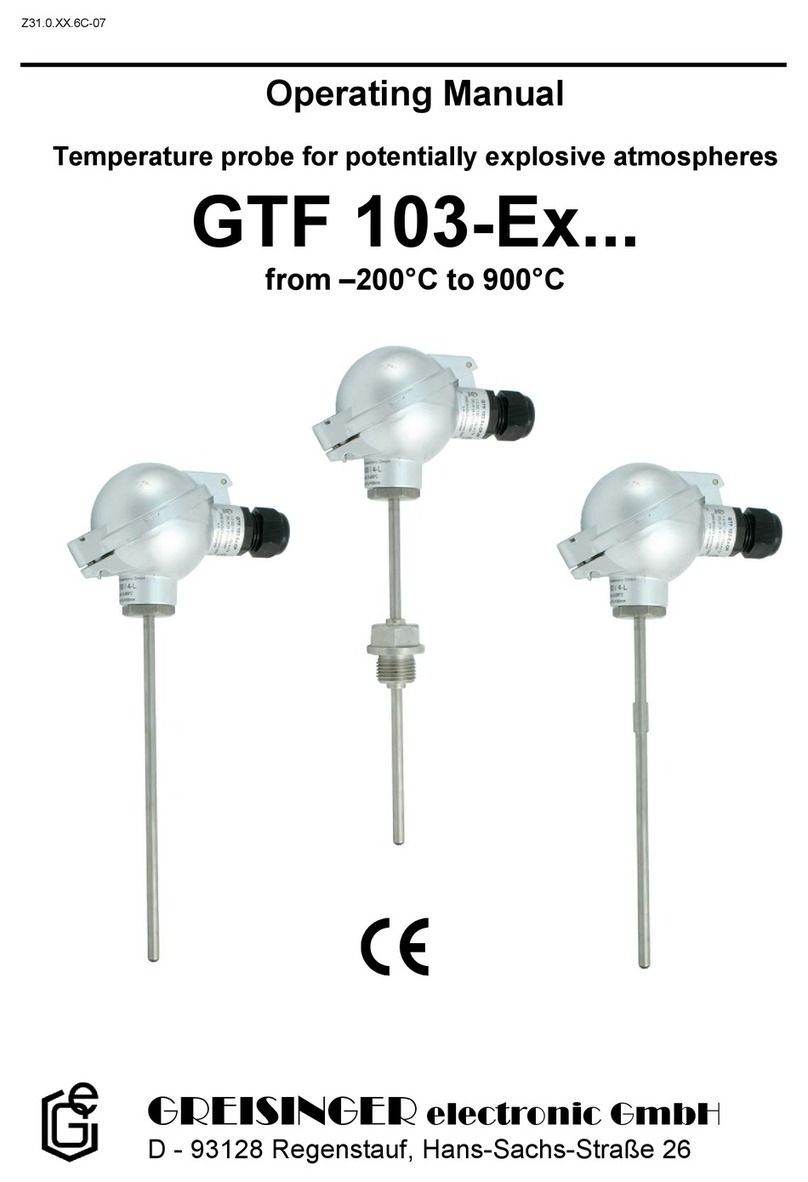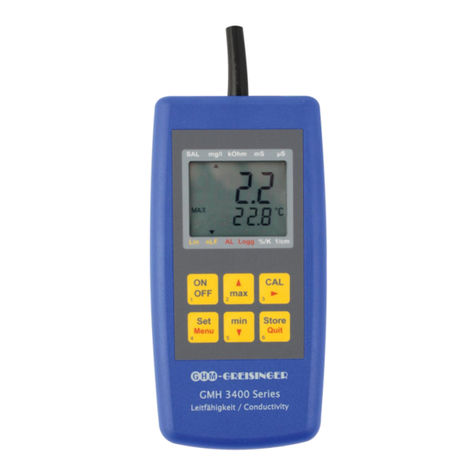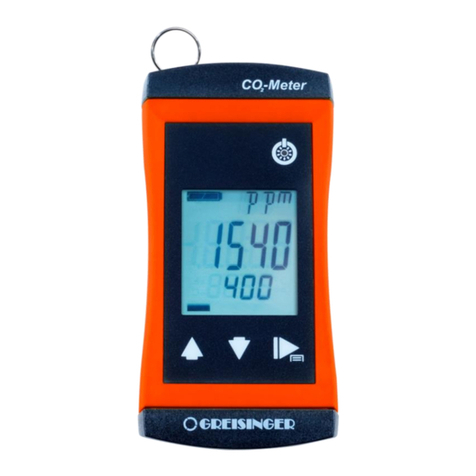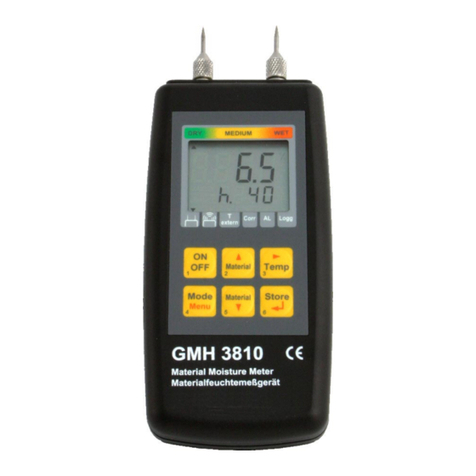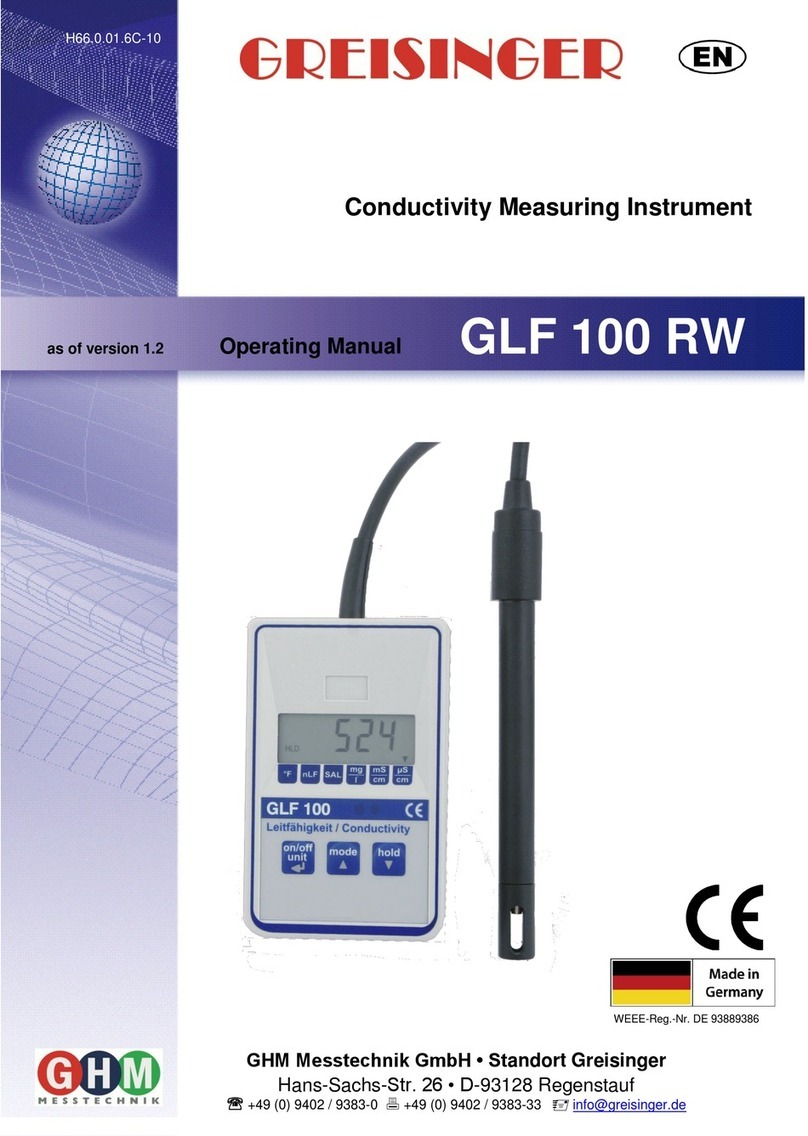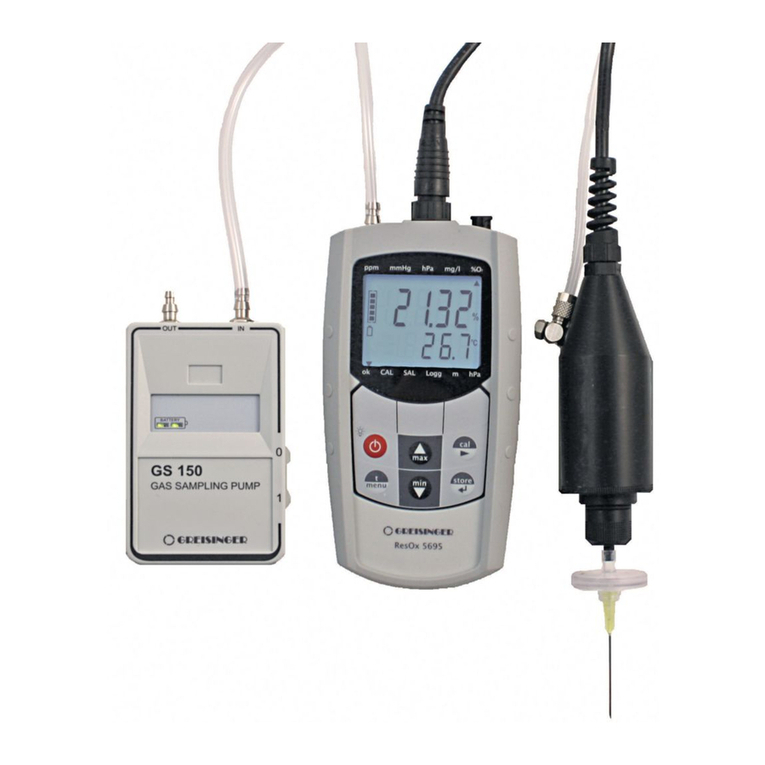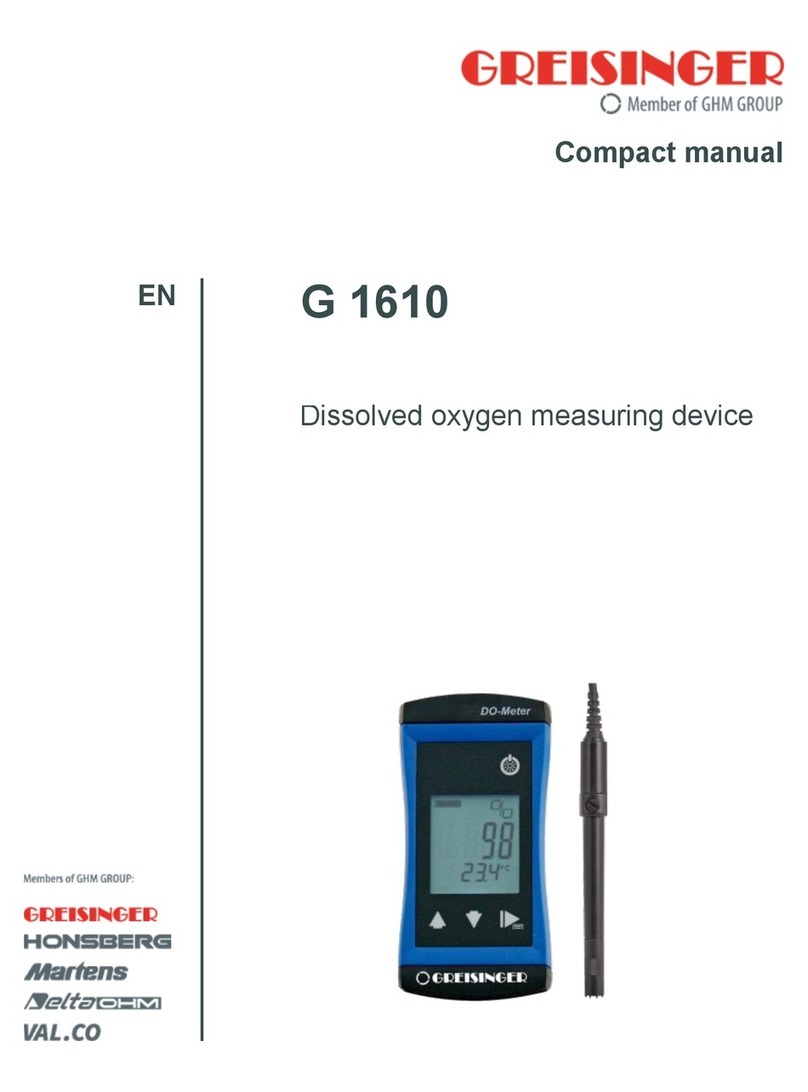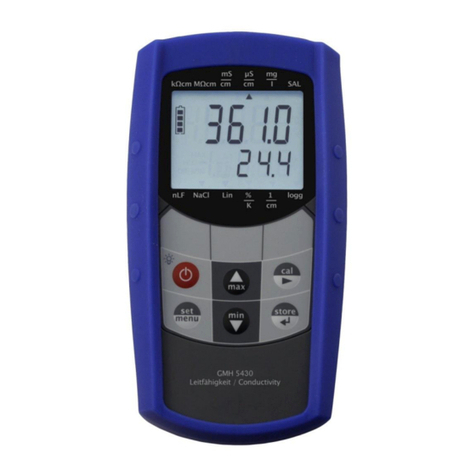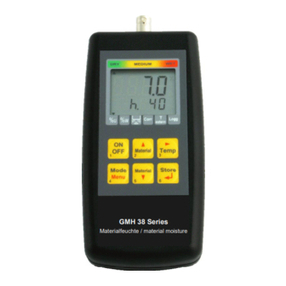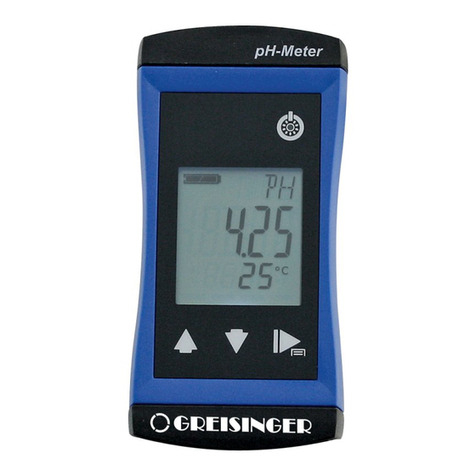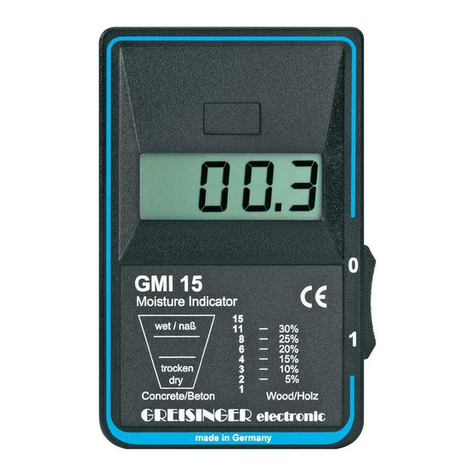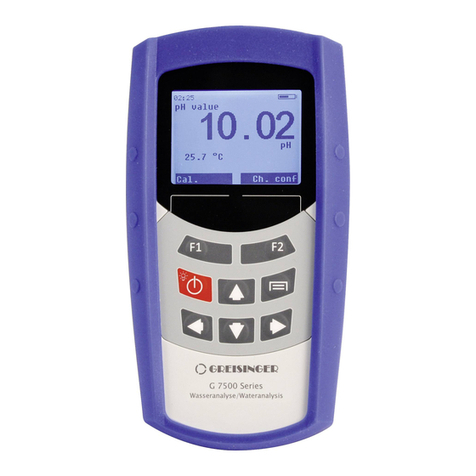For storage purposes place electrode in a container with dechlorized water up to the cable connection point.
Make it a rule to unscrew the protection cap and to clean the membrane with a clean soft tissue before each
measuring series.
Exchange electrolyte every 6 months.
In case of damage to the membrane, both membrane and electrolyte will have to be exchanged.
Exchanging ofmembrane:
When do you have to exchange the membrane ?
1. Immediately after inadvertently knocking the electrode tip against a hard object, thus causing damage.
2. If the measuring value displayed is continuously falling, this is normally an indication for a defective
membrane.
The damage may be a hairline crack too small to be noticed with the naked eye through which the electrolyte
film
slowly evaporates; this resulting in a reduced conductivity and a slowly but continuouslydecreasing measuring
value being displayed.
A membrane exchange is easily done and can, therefore, be carried out by the user himself:
1. Unscrew protection cap.
2. Take off first red neck ring.
3. Take off O-ring and second red neck ring. (This is easily done by slightly turning the rings with a tissue.)
4. Remove damaged membrane.
5. Remove cover screw and empty out old electrolyte (attention: electrolyte is caustic).
6. Top up with new electrolyte (brimful) holding electrode slightly askew to allow air bubbles to escape.
Lightly tapping the electrode shaft also helps to remove air bubbles.
Electrolyte does not have to be exchanged if new or if membrane has been damaged whilst putting it on
7. Re-place cover screw. Screw to be fingertight only.
8. Hold electrode vertically and check the four channels for droplets. If no droplets can be seen use your
thumb to make pumping movements on the pressure balance membrane till electrolyte is showing.
9. Turn electrode round holding it vertically pointing upwards.
10. Wipe off silver cathode with a paper tissue till clean, but do not polish. The "scratches" on the silver
surface have been deliberately made as scuffing assists the formation of an electrolyte film.
11. Put one drop of electrolyte on the silver plate, put new membrane on top and re-position first red neck ring.
Make sure to draw the 4 edges of the membrane slightly downwards to avoid excessive wrinkling. Pull ring
down until O-ring groove re-appears. Re-place O-ring avoiding any risk of damaging the membrane with
your finger nails. Put on second red neck ring and cut off excessive Teflon material with razor blade or
sharp knife.
12. Re-place and fasten protection cap.
It is vital that no wrinkling occurs when fitting the new membrane. We, therefore, recommend that the Teflon
material be gently drawn down after re-positioning of the first neck ring to smooth any wrinkles. Make sure not
to twist membrane !!
Utmost care must be employed in conducting this procedure. There must not be any pressing, pushing or
turning in the opposite direction as the membrane tension would thus be relieved never to allow trouble-free
operation of the membrane.
If you do not succeed in replacing the membrane at the first attempt, please repeat procedure. If membrane is
not fitted tight enough, twisted or wrinkling, this may lead to incorrect measurements.
Make sure to use a new piece of Teflon for each attempt as a piece of material that has once been stretched and
twisted can never again be made into a well-positioned membrane.
To check if membrane in electrode is tight enough, hold electrode with tip pointing upwards, switch on unit
and wait for display to show stable value. Then move electrode downwards with a jerk. In case of deviations on
the display of approx. 2 mg/l or more, the membrane has not been fitted tight enough and will have to be
replaced.

